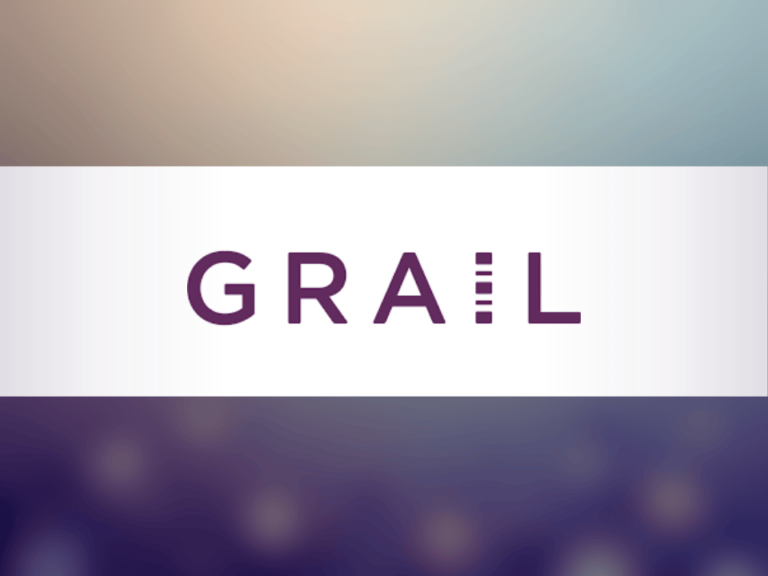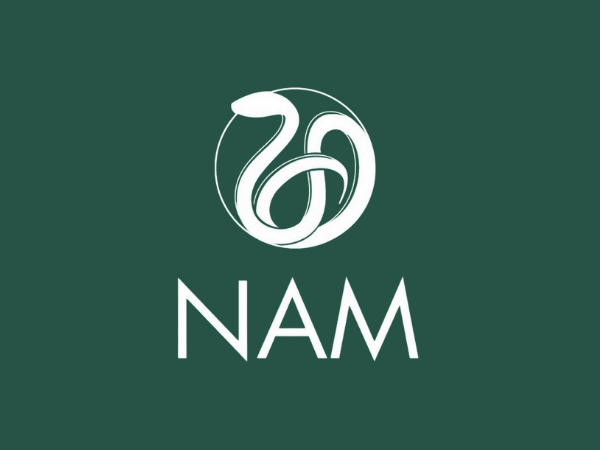Government agencies said the biotechnology billionaire Patrick Soon-Shiong had overstated the extent of their involvement in “Cancer MoonShot 2020,” the immunotherapy clinical trials program he put together.
In an in-depth conversation with Matthew Bin Han Ong, a reporter with The Cancer Letter, Soon-Shiong said that while his program doesn’t seek federal funds, it has the support of NCI and FDA officials.
Soon-Shiong said he and Vice President Joe Biden met to discuss their interlocking missions and are now pursuing them.
“I made it very clear upfront—what we will do and I will do is I will be the cattle prod from the philanthropy perspective, and I will be the cattle prod from the private sector in getting the pharma and biotech to work together,” Soon-Shiong said. “What the vice president can do from his perspective is look at the inefficiencies inside the government from any of the agencies, but I’ve got to tell you, what was incredibly exciting is there wasn’t any roadblock from the regulatory agencies. I mean, the FDA was amazingly supportive—Bob Califf [nominated to be the next FDA commissioner] and Janet Woodcock [director of the FDA Center for Drug Evaluation and Research] and Peter Mark [deputy director for the FDA Center for Biologics Evaluation and Research] were incredibly supportive.”
Soon-Shiong said his interaction with NCI draws on the institute’s expertise through a Cooperative Research and Development Agreement. NCI officials say the existence of the CRADA cannot be construed as an endorsement of Soon-Shiong’s Cancer MoonShot 2020 program.
Matthew Ong: What led you to convene this coalition and put together your “Cancer MoonShot 2020” program?
Patrick Soon-Shiong: This is an evolution, and it started, obviously, way back, as I started developing Abraxane. And by 2005, as I got the drug approved, I began to recognize that the immune system is what we needed to protect.
And so I was pushing on the concept of low-dose chemotherapy as early as 2005. I trained under Donald Morton [founder of the John Wayne Cancer Clinic] at UCLA as an oncologist-surgeon, and he was one of the forefathers of immunotherapies, because he was working with melanoma tissue and injecting it with cancer vaccines.
So when CancerVax [the company Morton founded] unfortunately failed, Don turned to me, and I continue to help support it, because I really believed in it. It failed only because Don unfortunately had designed a trial incorrectly—he had BCG as a control arm, which is another immunotherapy, and without realizing it, he was comparing immunotherapy to immunotherapy.
Nonetheless, it was very clear to me that we need to protect the immune system and walk away from maximum tolerated dose chemotherapy, and as you know, writing through The Cancer Letter, our protocols haven’t changed at all, frankly, all these years in chemotherapy. That was my level of frustration.
Because I had the power of the pulpit as a CEO of a company that had a drug called Abraxane, I used that, and in 2008 or 2009, raised $1 billion to run maybe 50 to 60 multiple phase I/II trials simultaneously, or with this molecule, but with combination chemotherapies. But to figure out which are the combinations that are best to get the maximum activity but low toxicity and highest immune activity—in 1990, I wrote an obscure paper in which we demonstrated a cell called a natural killer cell required cell-to-cell contact and could kill tumor cells.
So I’ve been obsessed with the idea that, since our own immune system protects our cells against cancer, then why are we actually depleting that? So I began to write papers and file patents on metronomic dosing. Still, even to this day, it’s not had very much traction, but the concept here was to use metronomic chemotherapy to immuno-modulate and activate the immune system rather than maximum tolerated dose chemotherapy, which may get a rapid reduction in tumor: you win the battle, but you lose the war, because you wiped out the immune system.
When I sold the two companies, I decided that I’m just going to take this on myself, and when I sold that, I thought, “Oh my gosh, the obstacles!” So you sort of see the obstacles—the first thing is that the pharmaceutical companies are building all these different drugs in silos, and you need these coordinated combinations. I needed to find a way to get these pharmaceutical companies to work together.
And, fortunately, because I was the CEO of a pharmaceutical company, I knew all the CEOs at the CEO-to-CEO level, and as some of the even younger members became more senior and ultimately because CEOs, our relationships grew through the 15 years of just experience of knowing each other. And I took it upon myself to get the CEOs together many times and kept on harping, “We’ve got to work together and collaborate.”
Then I turned around and found that, “Oh my gosh, most of the trials are done in the community, as opposed to the academic centers.” Yet the academic centers set the protocol, but the trials are accrued in the community. So if we wanted to change the clinical trial development where changing more than 5 percent of trials being accrued, we need to actually involve the community.
But we need the support of the academic centers and organizations like the NCI to give the guidance. So now I need to bring another two sort of parties who don’t normally work together—the community oncologists and the academic oncologists. We were able to bring that together.
I then realized with the heterogeneity, we need to actually go to whole genome sequencing, but more than that, all the way down to the proteome level, so that we can actually understand what targeted therapy is and also understand the immunome. So we need to build that, and I built the CLIA-certified whole-genome sequencing. The trouble is, the community oncologists and academic oncologists would not use this, because nobody’s paying for it.
So we subsidized it for many years. And just this last week, Independence Blue Cross said, “We will step up and we will pay for it.” So all the dominoes fell together around 2014. And then, in May of 2015, I came into contact with Vice President Joe Biden, because of his son Beau Biden, and then in October 2015, Vice President Biden asked me to come see him, and the White House and I wrote this two-page white paper on the moonshot.
He was intimately and personally involved in the care of his son, and he saw firsthand the struggle of what the patient goes through with cancer. By November, after he made the decision not to run [in the 2016 presidential race], he came quietly to Los Angeles and spent three hours on our campus. And then I gave him the second white paper, and I said to him, “Look, we can convene all the right people to make it happen,” because he said to me, “Patrick, what can do to make this move faster?”
So the vice president and I have common goals here to accelerate the development of drugs so we can actually get to the path of the cure as fast as we can. I said, “Well, the issues are, we should get all these disparate parties in I call the ‘complex workflow of cancer.’” On one hand, we can get pharma together to work with biotech and bring them to the table, but we need pharma and biotech all to combine the drugs and get comfort from the FDA that it’s okay to do novel combinations and get them to the table.
Then we need to state to the academics and to the community that you really should define what you’re going to do to the patients through quantifiable genomic and proteomic sequencing that they’re going to say who’s going to be paying for it. So I brought Bank of America and Independence Blue Cross to the table.
And then I brought all the clinical leadership of academic centers and the directors of the branches at NCI—Jeffrey Schlom [chief of the NCI Laboratory of Tumor Immunology and Biology] and James Gulley [chief of the NCI Genitourinary Malignancies Branch, and director of the NCI Medical Oncology Service at the Office of the Clinical Director]—who direct work in this field of immunotherapy, and then Bob Califf and Janet Woodcock.
The goal was, at the end of that meeting, to find a common consensus that we should all work together and actually bring to the table our strengths of areas of responsibility that we could be making impact on and lead for the common goal of enhancing and making more efficient clinical trials by doing combination therapy, and by validating it with genomic sequencing and also validating with Big Data.
So that’s the plan, and we called that Cancer MoonShot 2020.
There is also a lot of interest in Vice President Biden’s moonshot. You mentioned working with the vice president—what is the connection between your program and Biden’s moonshot?
PSS: I think Vice President Biden likely is doing his due diligence. The moonshot that we proposed to him was the moonshot that I proposed to him on Oct. 6 and again on Nov. 16 and Dec. 1. I think he’s written very clearly what his views are, and his views are aligned with our views to accelerate the efforts of the path to the cure.
I think it’s a good thing for the country that President Barack Obama put him in charge of what he called “mission control” of the moonshot, because he is exactly the right person, I’ve always said, because he can make things happen across the aisle, and he’s completely committed and passionate and is a fantastic human being. I got to know him from May to December in a very difficult time, and he is one of the most sincere people who really cared.
Do you expect a partnership between your program and Biden’s moonshot or for the two initiatives to work together in the coming year?
PSS: The program that we are working is really for the clinical acceleration of drugs. I think he’s working through all the elements. As far as I understand, his statement is to accelerate the efforts to improve progress and to unleash breakthrough and do immunotherapy, genomics and combination therapies, because these are stuck in silos, and to improve clinical trials in the community.
That’s the program that’s needed, right, and if you look at the program Dec. 1, we are completely aligned in that concept.
So this is the part where I’m completely new to this story, so you have to forgive my ignorance with the next few questions about your partnerships. When I read your official press release—
PSS: When you said partnerships, before you go any further, one thing we did make clear to the vice president, is we are not asking for any funding. We are truly—and I made it very clear upfront—what we will do and I will do is I will be the cattle prod from the philanthropy perspective, and I will be the cattle prod from the private sector in getting the pharma and biotech to work together.
What the vice president can do from his perspective is look at the inefficiencies inside the government from any of the agencies, but I’ve got to tell you, what was incredibly exciting is there wasn’t any roadblock from the regulatory agencies. I mean, the FDA was amazingly supportive—Bob Califf and Janet Woodcock and Peter Mark were incredibly supportive.
You should feel free to call directly Jeffrey Schlom and James Gulley, and maybe you should call Janet Woodcock. She made some very passionate statements that we need to increase the efficiency of clinical trials.
So I was very pleased that what the vice president can do is really convene a call to action. I can’t speak for the vice president what his plans are, all I can tell you is he’s the perfect person for this initiative—or whatever moonshot you want to call it, there’s nothing to the name—but more importantly, we’re both aligned in improving the chance of getting a race to the cure going.
When I read your official press release, your moonshot looked like something that NIH, FDA and other federal entities would be highly interested in.
PSS: Just be careful, because it’s not an NCI initiative, nor is it an FDA initiative. It’s a public-private initiative, but in enlisting the insight of the NCI of the science through the CRADA (Cooperative Research and Development Agreement) or whatever participation, and in enlisting the support of the FDA so that it’s clear that it’s within the new guidance of combinations.
So if you called the NCI and said, “Is this an NCI initiative?” they would say no, and they would be correct, because it’s non-NCI. This is not an NCI-driven initiative. Having said that, the directors at the immunotherapy division holistically and enthusiastically—I want them to have a role in the first-in-human trials of combination, so that there’s completely no bias. It should be scientifically driven.
Right, so I did make some phone calls, and to my surprise, I was told by Dr. Francis Collins, as well as insiders at FDA and the White House that they are not involved in your program, in contrast to what was apparently stated in the initial draft of your press release.
PSS: Well, I can only tell you the fact that Jeffrey Schlom is actually spending three days with me right now designing clinical trials this weekend. You’re welcome to call him and James Gulley. I just got off the phone 10 minutes ago saying how he’s flying to Miami this weekend to talk to one pharma company, and I told him I spoke to the CEO of another pharma company and we’re talking about an anti-PDL1 that he’s designed. So all I can tell you is what we are doing.
Dr. Francis Collins is not FDA nor NCI, right? He’s the head of the NIH, and I don’t know if you want to mix this up with the Precision Medicine Initiative. If Dr. Francis Collins said he had nothing to do with it, I think he’s correct.
But I think, look, what happened was, you know, Robert Califf was at the meeting. Maybe what you should do is call some of these doctors, like Dr. Azra Raza [director of the MDS Center at Columbia University], Mark Poznansky [a laboratory director of the Vaccine & Immunotherapy Center at Massachusetts General Hospital], Stephen Nimer [director of the Sylvester Comprehensive Cancer Center], Ralph Hruban [director of the The Sol Goldman Pancreatic Cancer Research Center], Andrew Evens [director of the Tufts Cancer Center at Tufts Medical Center], and ask them—coming from me—what did Robert Califf say, what did Janet Woodcock say, what did Peter Marks say, what did Jeffrey Schlom say, what did James Gulley say.
I mean, you kind of have to speak with the people at the meeting, right? I think it is unfair, frankly, to ask a member of the government who wasn’t at the meeting. This is very complex.
Since NCI is a part of NIH, I was going through the regular channel of press offices to obtain statements for the public side of your program’s public-private partnership. Do you think there was a misunderstanding initially? It appears as if many parties were not aware that you have included them in your announcement of the coalition.
PSS: No, wait, let me just set the facts straight. Every member of the FDA or NCI—they actually sent me their quotes. So I’m not sure how could they… okay?
But I mean, look, we should get beyond that, the issue really is, this is an important program. What’s more important is, rather than any of these—I don’t know what these issues are, politics, whatever you may want to call it—is, what is important for the patient, right?
And I think in the collaboration, we should have an aligned mission, it’s not this program or that program. We all are aligned in the mission to look for the cure, that’s all I can say, and whoever can get there, I’ll be on their bandwagon, and because I’m there to support whoever can actually bring us to the cure.
This is one of the most inclusive collaborations. The whole idea here is about collaboration.
It appears that you’ve received positive responses from pharma, but I’ve read that Pfizer, Merck and GlaxoSmithKline have—much as the federal agencies have done—pulled out from formal association with your coalition. Are there any other pharmaceutical companies who have done the same? And what do you make of their withdrawal?
PSS: Let me tell you that this is the launch. So Amgen, Celgene are absolutely on board. Glaxo initially said they were on board, and so did Pfizer, and when they got together, their legal team said they need to find more information from the CRADA, they need to get more data from the NCI and they didn’t have time. I said that’s fine, and then Merck is part of the Pfizer joint venture, and Merck said they have to do what Pfizer had to say, and so there wasn’t time for me to meet the CEO of Glaxo and Pfizer, so that’s fine.
Since the announcement, I’ve met the CEO of Merck and she said I can use her name and she said she’s enthusiastic—I just had a conversation about the antibody, it was Pfizer’s antibody and the NCI’s meeting them in a couple of weeks.
So these are just processes in motion, we’ve had four other biotech companies join even while we were here. The number of molecules has now gone from 60 to maybe 70, so I think it’s an exciting process, where we bring molecules and make drugs accessible to patients.
What is the budget for the program, and what are your next steps? What will the milestones be and when will you expect results?
PSS: The budget of this will be billions, I anticipate. Let me give you the design—this is very important, this is The Cancer Letter, they need to understand the design and the people who read this are oncologists.
The importance of this is there’s going to be what we call a Discovery Phase, where patients who have active cancer and are clinical patients will undergo, for the first time, whole genome sequencing, RNA-seq proteomic analyses and quantitative proteomics. So we’ve evolved the platform from genome to the proteome. That’s point one.
Point two, we’ve taken all comers and that allows us to then create a separate protocol called a stratification protocol, where we will stratify the patients to the anatomical tumor types. We’ve arbitrarily said 22 metages, obviously we can as many—brain, breast, lung, bladder, melanoma, liquid tumor cells, etc.—so that the oncologists who are trained to the anatomical tumor types could then see patients along those paths.
We then stratify that across all the stages, whether it be new adjuvants, adjuvant first line, second line. Once we’ve done the stratification phase, we then drop them into randomized phase II buckets. The randomized phase II buckets, on the one hand, are standard of care, and the other one is standard of care plus and minus the immunotherapy and novel combinations.
What that does for us is it allows the standard of care to be paid for by the insurance companies, and it allows the treatment arm to be where the pharma companies provide their drug. Now for the first time, you’ll have data across thousands of patients, across multiple phase II trials, but randomized, for which the data of the genomic sequencing will be available, so that when we measure the outcomes, we now have data that is useful and can be then driven into either randomized phase III trials or expanded phase II trials for registration.
So nobody owns any proprietary advantage. What everybody has gained is efficiency in trial design; doctors have gained access to drugs for their patients who are from a complex GPS test; community oncologists now for the first time don’t really have to lose their patients, and we accelerate, I believe, immunotherapy.
The budget for that may cost billions, because you may have 10, 50 or 100 or 200 randomized phase II trials over the course of the next four or five years, but the cost of that will be borne either by the insurance company, pharmaceutical company, the drugs themselves—and yes, if the government wants to support through grants and clinical trials—and most importantly, also philanthropy.
The entire financial method of payment hasn’t changed other than we’ve created an efficient framework.
Do you have any further comments? Did I miss anything?
PSS: I’m excited that we’ve moved, and that we’re already designing three or four or five [clinical trials] and this weekend is going to be very exciting where I will be working with investigators at the NCI in drafting the clinical trial design.
Step one in the moonshot will be establishing a global advisory group, which we are doing in real time, and we go into January. Step two is to publicly announce it, which we have just done. Step three was to establish a common web-based secure portal that Independence Blue Cross has provided us through NaviNet. Step four is to amend currently approved vaccine-based trials, which we are doing as we speak this weekend.
So we are very much on the path, very much a methodical approach, there’s no mystery to it I think.











